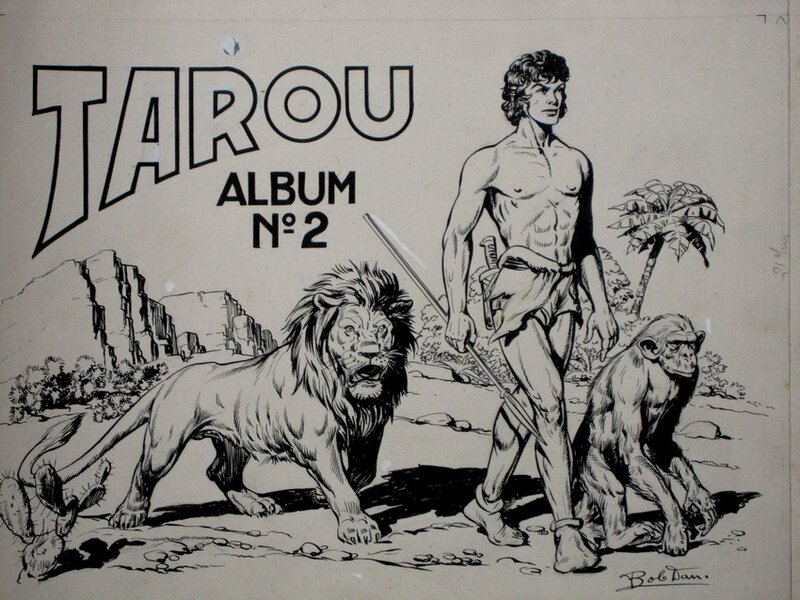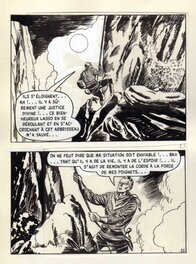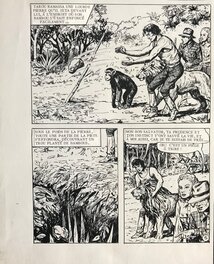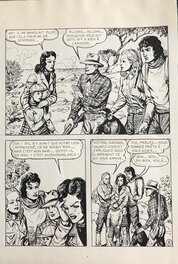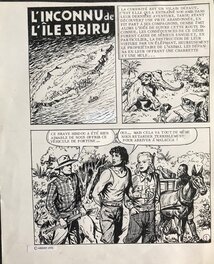In Tiessenes 's collection
Inscriptions
Signée en bas à droite
Comment
Couverture originale d'un recueil de Dynamic (Tarou) publié par Artima vers 51 ou 52. Le format à l'italienne aère la composition contrairement aux couvertures plus petites et plus chargées de la série Tarou. Le format A3 permet en effet un travail plus abouti de la part de Bob Dan, digne d'une affiche ou d'un poster. A titre général, le graphisme des productions Artima de l'époque, désuet pour beaucoup, me semble conserver pas mal de charme.
1 comment
To leave a comment on that piece, please log in
About Bob Dan
Robert Dansler, better known as Bob Dan, was one of the most prolific French comics authors. Besides Bob Dan, he sometimes signed his work Bobby, Erdé or Hoberdon. Dansler studied at the Bernard-Palissy school in Paris, where he learned drawing and sculpting. After being in the Navy during World War I, Dansler turned to painting and advertiment illustration at the Imprimerie Moderne in Nantes and Maison Rosen in Paris.
From the early 1930s, he drew his first gags and illustrations in Tel Quel and Le Hérisson. He became a productive comics artist, with contributions to magazines like Jeudi ('Frangipane et Carafon', 'L'Aigle des Montagnes Rocheuses', etc.), Jean-Pierre and several almanacs. In Mon Camarade (the predecessor of Vaillant magazine), he drew 'Jim Mystère' from 1936 to 1940. In 1941 he was present in Junior with 'Yves et ses Feux Follets'.
After World War II, Dan's production intensified, becoming one of the main artists of Artima publishers. He remained at this publishing house until his death in 1972. There, he created characters like 'Bill Tornade', 'Jack Sport' and 'Tarou'. While working for Artima, Dansler also drew for Robin l'Écureuil, L'Intrépide ('Zorro', 'Bison Noir', 'Don Luz d'Estramadure'), Zig et Puce and Zorro.
He took over various series in the new version of Jean-Pierre (1954-1955).
Text (c) Lambiek

